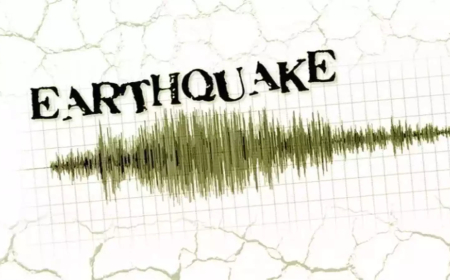Gold Loses Short-Term Sparkle: Optimists Eye Future Growth While Critics Warn of Possible 40% Fall
Gold’s appeal is facing a test as some investors expect long-term value gains while others predict a sharp 40% decline. Here’s a detailed look at both sides of the story. Gold's charm weakens in the short term as optimistic investors hope for future gains while pessimistic analysts fear a possible 40% drop in prices. Explore the full analysis.

Gold’s Current Struggle: Some See Long-Term Value, Others Expect a Sharp Drop
Gold has long been considered a safe place for investors during uncertain times. Its shine, both literal and figurative, has made it a favorite for wealth protection across centuries. But right now, the precious metal is at a crossroads.
While some market watchers believe that gold is gearing up for a big rebound in the coming years, others are issuing strong warnings — saying that prices could fall as much as 40%. Let’s explore this topic in a clear, point-by-point way so you can fully understand the arguments from both the bulls (who see gold rising) and the bears (who fear a collapse).
1. The Current State of Gold Prices
-
As of recent trading days, gold has lost its momentum compared to earlier highs.
-
The metal has been trading in a tight range, with prices not making any strong upward moves.
-
Many investors are now wondering whether this slowdown is a pause before a rise — or the start of a deeper fall.
2. Why Gold Was Shining Brightly in Recent Years
-
During times of economic stress, like the pandemic and inflationary periods, gold became a popular choice.
-
With central banks worldwide printing money and cutting interest rates, gold acted as a hedge against currency weakness.
-
This led to gold reaching all-time highs, with many thinking the upward trend would continue.
3. Bulls Believe the Best is Yet to Come
The group of investors known as “bulls” remain confident in gold’s long-term success. Here’s why:
-
Inflation Concerns Persist: Even if inflation slows down, many believe it won’t disappear entirely, keeping gold relevant.
-
Central Bank Buying: Some countries are increasing their gold reserves, viewing it as a safer store of value than dollars.
-
Geopolitical Uncertainty: Ongoing global tensions — like in Eastern Europe and the Middle East — make gold attractive during instability.
-
Weakening Dollar Outlook: If the U.S. dollar drops in strength, gold usually benefits as an alternative asset.
4. Bulls Also Highlight Historical Patterns
-
Historically, gold tends to rise over long time periods, even if it experiences short-term falls.
-
According to gold supporters, every big dip eventually gives way to a new high, especially in times of economic rebuilding.
-
They see the current dip as a buying opportunity rather than a sign to exit the market.
5. Bears Are Ringing Alarm Bells
Not everyone is optimistic, though. “Bears,” or those who expect prices to fall, are pointing to several danger signs:
-
Interest Rates Are Climbing: When interest rates go up, gold (which doesn’t pay interest) becomes less attractive.
-
Stock Markets Are Rebounding: Investors may move money away from gold and toward riskier assets like stocks and tech.
-
Strong U.S. Economy: With job numbers and consumer confidence improving in America, the need for a safety net like gold seems less urgent.
-
Technical Signals Are Weak: Charts show gold struggling to hold key support levels, a sign that further drops could come.
6. Bears Say Gold Could Drop By 40%
-
Some experts are predicting that gold could plunge by up to 40%, citing past downturns as comparison points.
-
This would mean gold dropping from over $2,000 per ounce to near $1,200, a painful hit for investors.
-
They believe that once certain “trigger points” are hit, panic selling could set in, speeding up the crash.
7. What History Tells Us About Gold Crashes
-
In the early 1980s, gold fell by nearly 65% after reaching a high — taking years to recover.
-
Similar patterns occurred in the 2010s after the post-recession surge.
-
Bears say that we could be heading into another multi-year correction based on these historical trends.
8. Is There a Middle Ground?
-
Some analysts believe that gold will neither crash nor soar, but rather move sideways for some time.
-
This group argues that gold may stay within a range of $1,800 to $2,100 as investors wait for clearer signals.
-
In this view, gold becomes more of a stabilizer in a portfolio rather than a high-growth asset.
9. How Should Everyday Investors React?
-
Don’t make sudden decisions based on fear or hype.
-
If you believe in gold for the long run, consider holding through the volatility.
-
Use gold as part of a diversified portfolio, not the only asset you own.
-
If you’re nervous about a crash, consider using stop-loss orders or reducing your exposure.
10. Gold Alternatives Gaining Interest
-
Some investors are looking at silver, platinum, or even cryptocurrencies as alternatives to gold.
-
While these have their own risks, they may offer faster growth or more real-world uses than gold.
-
However, they are also more volatile and require careful research before investing.
11. Market Sentiment Is Split
-
Surveys show that investor opinions on gold are almost evenly divided.
-
Some are quietly accumulating more gold during dips, expecting a long-term reward.
-
Others are pulling out and shifting funds toward tech stocks, ETFs, or real estate.
12. Central Banks Still Support Gold
-
Despite market jitters, central banks are still accumulating gold, especially in Asia and the Middle East.
-
This ongoing buying acts as a floor for gold prices, preventing extreme crashes in many cases.
-
Their actions signal long-term confidence, even if short-term investors are fearful.
Final Thoughts
Gold’s recent slowdown in shine has created two sharply divided camps — one that sees a glittering future, and another that warns of a deep and painful drop. As with any asset, there’s no perfect prediction, but understanding the different views helps you make smarter decisions.
Whether you see gold as a safe long-term hold or a risky asset due for a fall, your personal goals and risk comfort should guide your next steps.
Would you like this article turned into a LinkedIn post, carousel, or video content too? Let me know — I can adapt it to boost reach across platforms!
What's Your Reaction?

























































